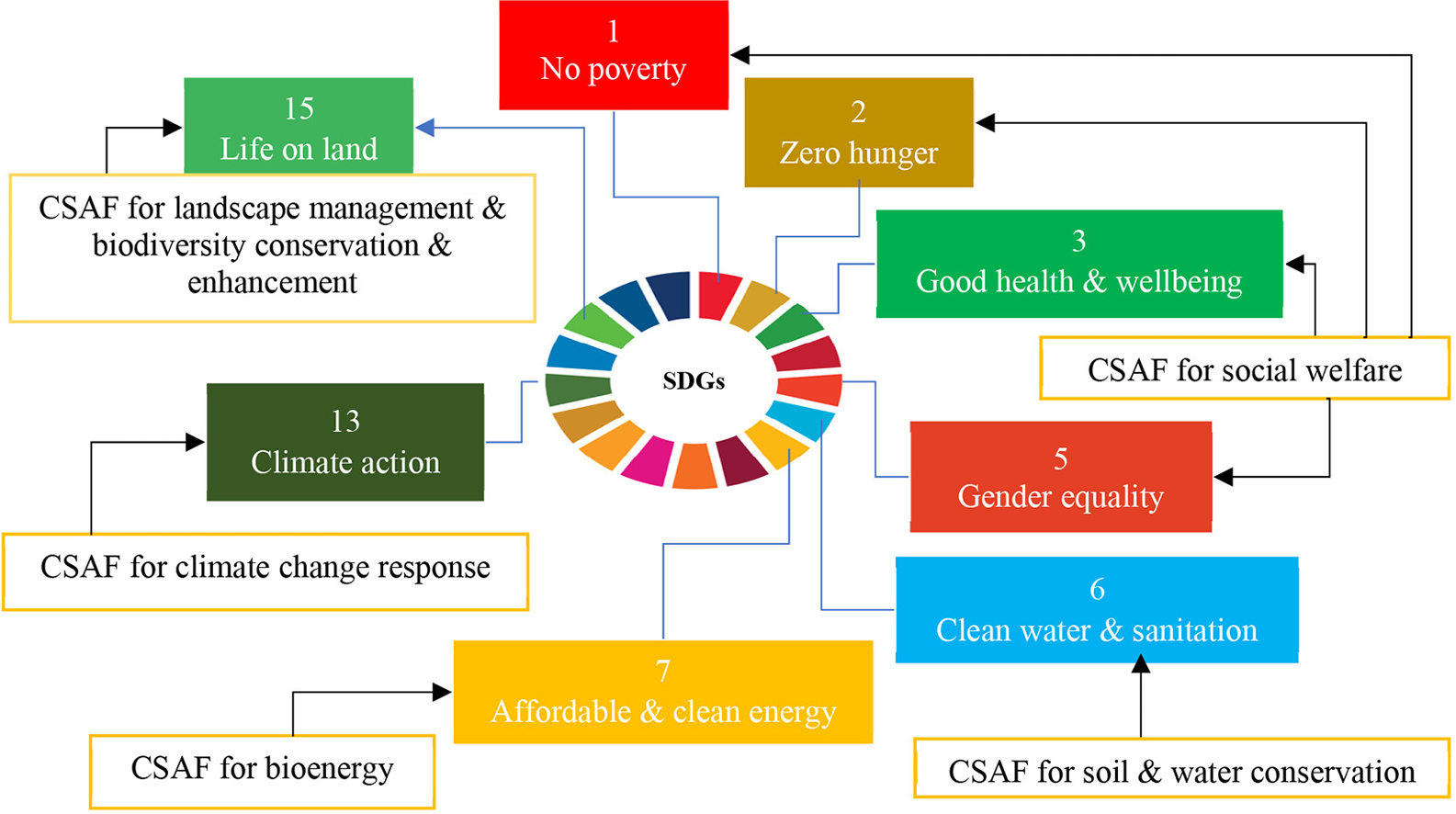May, 2023 | Forest Policy and Economics | Source |
Introduction: Climate-smart agroforestry (CSAF) practices offer integrated solutions to climate change, food security, and environmental degradation, but significant knowledge gaps remain concerning smallholder adaptation and related socioeconomic outcomes. Researchers from Sokoine University of Agriculture in Tanzania and the International Livestock Research Institute (ILRI) in Kenya systematically reviewed 78 articles to identify successful CSAF innovations, key challenges to adoption, and potential opportunities.
Key findings:
- What Works and Why:
- Integrating trees with crops and livestock improves productivity and sustainability by enhancing soil health, water retention, and biodiversity.
- Using high-yielding hybrids like F1 coffee cultivars increases yields and stability, making CSAF systems more productive across diverse environments.
- Employing practices like pruning and mulching boosts efficiency and yields by reducing resource competition and improving system performance.
- CSAF enhances ecosystem services such as carbon storage, erosion control, and biodiversity, while maintaining agricultural productivity.
- Diversifying income through multiple farm products reduces risk and strengthens financial resilience during climate shocks.
- The integration of local knowledge with external expertise improves adoption and system management, as farmers adapt CSAF based on indigenous practices and support from NGOs or extensionists.
- CSAF contributes to multiple SDGs by supporting sustainable land use, climate action, and improved livelihoods.
- What Doesn’t Work and Why:
- High upfront costs hinder adoption because many smallholders lack the capital to invest in CSAF systems.
- Delayed financial returns discourage uptake, especially for farmers needing short-term income to survive.
- Limited access to quality germplasm restricts CSAF effectiveness, as farmers cannot implement optimal tree-crop combinations.
- Weak extension services prevent effective implementation, as CSAF systems require knowledge-intensive management.
- Underdeveloped markets reduce incentives, making it harder for farmers to profit from CSAF products.
- Insecure land tenure and policy gaps deter long-term investment, as farmers are reluctant to plant trees without land rights.
- Policy preference for monoculture limits institutional support for CSAF, undermining its visibility and integration into national strategies.
- Farmer risk aversion slows adoption, as uncertainties in outcomes and limited short-term returns make CSAF appear too risky.
- CSAF is not universally suited to all biophysical conditions, as shown in shaded cocoa systems that underperformed in drought-prone areas.
CSAF is a promising pathway for sustainable agriculture, offering multifunctional benefits that support climate resilience, biodiversity, and rural livelihoods while contributing to several SDGs. Realizing its full potential will require context-specific research—particularly on food security impacts—along with supportive policies, improved market infrastructure, land tenure security, and coordinated farmer capacity-building efforts. Preserving CSAF’s distinct identity while aligning with broader sustainability goals will be key to its successful scaling and long-term impact.
 Figure | Linkage of CSAF practices with SDG priority areas.
Figure | Linkage of CSAF practices with SDG priority areas.





